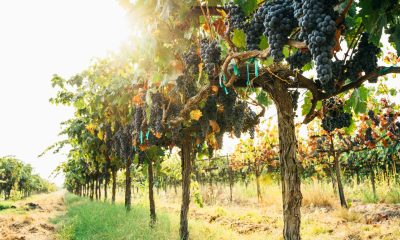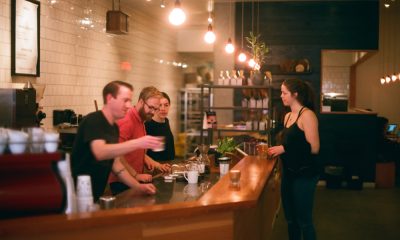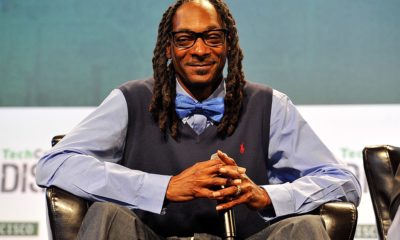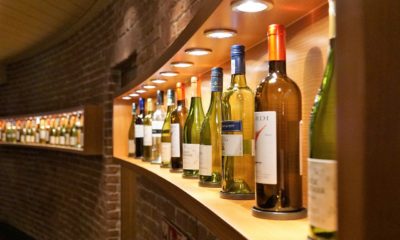Business
Wine Industry: A unique opportunity for wine apps is opening up as more millennials buy wine
Millennials don’t drink wine. Well, they didn’t. Alcohol aversion was often blamed, but a bizarre trend has emerged at a time of increased health consciousness—millennials have increased their consumption dramatically. Indicating a wine industry misunderstanding of the underserved millennial market, a unique opportunity is revealed—one which wine innovators Palate Club are set to exploit.
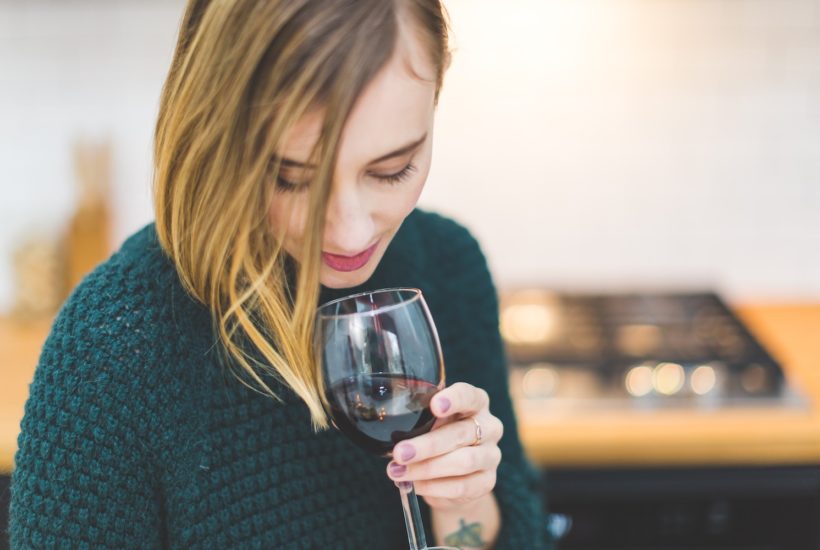
Wine Opinions have just released their second quarter report on changing wine consumer trends and some of the results are surprising. As the first full reporting period to have the ongoing COVID-19 pandemic traverse its entirety, it was inevitable that changes in consumer behavior would take place. However recent shifts in the demographics of wine consumption have opened up a unique opportunity for companies like Palate Club.
The most dramatic result in the report, which measures the net changes in consumer purchasing patterns, was the shift in wine consumption by the millennial population—a net increase of 50% over the previous period. This is encouraging for the wine industry as a whole, as the millennial demographic has been notoriously hard nut to crack.
More encouraging for the industry is that this shift is seen as something of a “great awakening” for millennials, and that their consumption will continue to grow. John Gillespie, Founder and CEO Wine Opinions, sees this event as more of a “cultural change” which will precipitate a shift where “millennials, in significant numbers” enter and begin to “dominate the wine market for the next two decades in terms of both per capita consumption and purchasing at every price point.”
Millennial problem…
It was only as recently as February of this year, just before the health crisis really took off, that reports were indicating that millennials were generally averse to wine consumption. Whilst most reports tend to focus on millennial aversion to alcohol in general, others theorize that there may be more to millennial disinclination towards wine than meets the eye.
One of the key problems in blaming the millennial aversion to wine on their general aversion to alcohol in general is that it ignores other indicators. One such important indicator is the average purchase price per bottle of wine. According to Mike Osbone, CEO of wine.com, although millennials are purchasing less wine per capita than their elders, they are spending more on each bottle they buy.
Of course, the positive indicators are not enough to adjust for the cold hard fact that a lower proportion of the millennial population drink wine than other generations. It is not just a problem that they are more moderate drinkers, but also a problem that fewer amongst them are even drinking at all.
Who’s to blame?
One of the barriers holding millennials back from embracing wine consumption is the baggage of the wine industry’s traditional image. Often wine is associated with imagery expressing affluence and an aspirational lifestyle, and the wine industry has keenly embraced this.
It is a tactic that has worked well on older generations, however millennials are notoriously adverse to promiscuous consumption. Largely being recognised as the generation that “ignited the experience economy,” millennials have been recognized as experience seekers who eschew more material consumption. This has seen the diversion of millennial cash away from vendors of plain old goods towards those that can offer “experiences”.
This has been further reinforced in wine by the standard communication used by the wine industry. The vocabulary is dense, not prone to adaptability and comes with associations of snobbery. Further, it focuses on the qualities of the wine itself, not what the wine will bring to the consumer. And trends are often expressed in terms of varietal and region, which often become trends because of a certain cultural cachet that has come to be associated with it.
France’s Bordeaux region has recognized this as a problem, and the recognition is evident in their latest communication campaign. Traditionally noted for its prestige, Bordeaux appealed to older generations of wine drinkers who readily embraced the dense vocabulary and intricate knowledge of the product required as yet another marker of the sophistication that wine consumption conveyed. But millennials don’t care about this, so instead of communicating along the traditional lines of appellations, terroir and other such product focused vocabulary, Bordeaux is attempting to engage younger consumers by focusing on the ways in which consumers experience the wines themselves.
Big shift…
If all of this is pointing to one thing, it’s that millennials are perhaps capable of seeing wine as a form of experiential consumption. Given the additional time at home to break into wine consumption and the need to find new experiences that could be enjoyed during lockdowns and social distancing measures, wine exploded with them.
It also sends a clear message and a challenge to the wine industry. The message is that millennials are going to become a big market that cannot be ignored. The challenge is for the wine industry to adapt itself to millennial sentiments and modes of consumption.
The modes of consumption must not be ignored either and, as is happening with retail in general, a broad shift towards online purchasing channels is happening in wine. While the uptake may have been slower with wine than with other retail sectors, this could be that the market is underserved at the moment. With increased logistical and regulatory burden when compared to other retail categories, investors have perhaps been quick to saturate easier targets first. This has left a big gap in the online market that needs to be filled.
Who will win…
With the acknowledgement that the wine industry received from millennials during the pandemic and the gaping holes in the online wine retail world, the current state of the market indicates that a couple of big opportunities exist here. The first is to capture the underserved millennial market by focusing on the experiential—rather than the status-signaling—nature of wine. The second, is to capture a big share of the growing online market.
One particularly strong entrant in this space is the innovative Palate Club. Besides offering a competitive online sales platform for wine, they have also nailed the experiential side through their introductory tasting kits and their complimentary wine tasting app.
From the moment they receive their introductory tasting kit, customers will be immersed in the experience. The kit comes in a neatly presented package with mysteriously cloaked bottles. This will invite consumers on a journey of discovery. A journey without the distraction of fancy labelling and medals tugging at their attention, where drinkers will be able to enjoy the wine as it should be—a fun and pleasant experience lived for the moment, not for the worship of a product. This experience will continue into their app, which is where the experience deepens and becomes increasingly personal.
This personalization of a user’s experience is so important these days, particularly with younger generations. Whether it’s TikTok’s “For You” feed or Netflix’s viewing recommendations, apps are increasingly reflecting user demand for personalization. This is something Palate Club achieves with its app, where users are able to register their like or dislike for each wine that they’ve tasted from Palate Club. Using user preferences, Palate Club’s algorithm will proceed to suggest highly personalized wine recommendations in the same way that social media platforms are delivering personalized selections of posts and videos.
__
(Featured image by Burst via Pexels)
DISCLAIMER: This article was written by a third party contributor and does not reflect the opinion of Born2Invest, its management, staff or its associates. Please review our disclaimer for more information.
This article may include forward-looking statements. These forward-looking statements generally are identified by the words “believe,” “project,” “estimate,” “become,” “plan,” “will,” and similar expressions. These forward-looking statements involve known and unknown risks as well as uncertainties, including those discussed in the following cautionary statements and elsewhere in this article and on this site. Although the Company may believe that its expectations are based on reasonable assumptions, the actual results that the Company may achieve may differ materially from any forward-looking statements, which reflect the opinions of the management of the Company only as of the date hereof. Additionally, please make sure to read these important disclosures.
Although we made reasonable efforts to provide accurate translations, some parts may be incorrect. Born2Invest assumes no responsibility for errors, omissions or ambiguities in the translations provided on this website. Any person or entity relying on translated content does so at their own risk. Born2Invest is not responsible for losses caused by such reliance on the accuracy or reliability of translated information. If you wish to report an error or inaccuracy in the translation, we encourage you to contact us.

-

 Crypto2 weeks ago
Crypto2 weeks agoEuropean Selling Drives Bitcoin’s November Slump
-

 Impact Investing1 day ago
Impact Investing1 day agoTreeblock Showcases Sustainability Solutions at ADIPEC Abu Dhabi
-

 Cannabis1 week ago
Cannabis1 week agoRemexian Wins Legal Battles Amid German Cannabis Licensing Dispute
-

 Fintech4 days ago
Fintech4 days agoItaly Issues First Natively Tokenized Minibond on Public Blockchain
